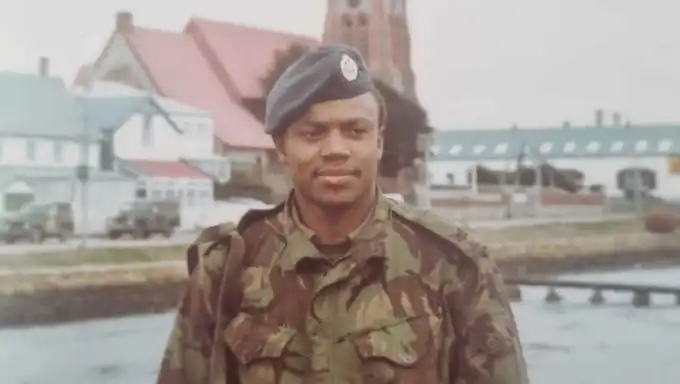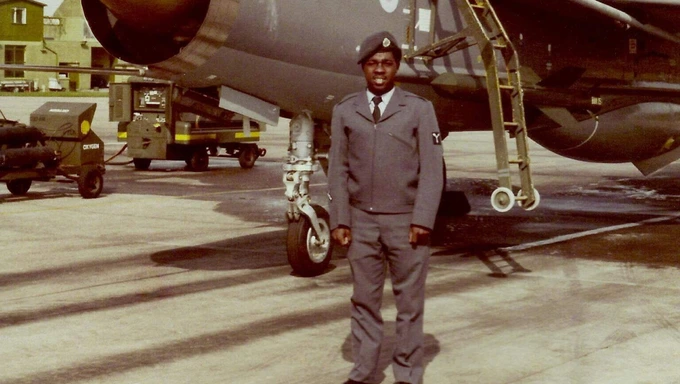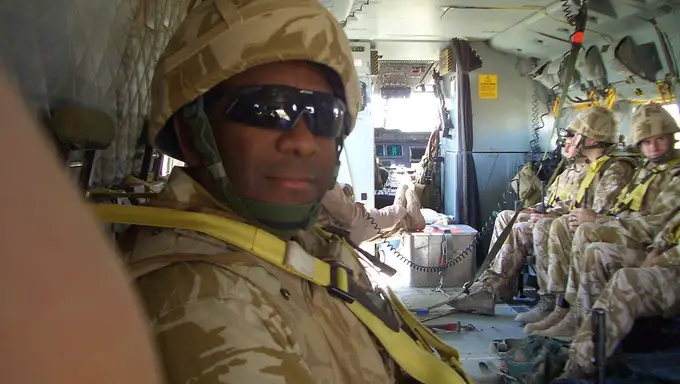Exploring the connections between the Armed Forces and the Windrush Generation
This year marks the 75th anniversary of the arrival of the ship Empire Windrush at Tilbury Docks, Essex. The ship has become symbolic of the generation who travelled from the Caribbean to settle in, and help rebuild, Britain in the decades after the Second World War.
The men and women on the Windrush came from several countries including Jamaica, Bermuda and Trinidad and Tobago, although many disembarking at Tilbury Docks on 22nd June 1948 were not seeing Britain for the first time, they were making a return journey. More than 100 of the passengers were current or former Royal Air Force (RAF) personnel from the Caribbean.
During the Second World War, people from the Caribbean made a major contribution to the war effort. Approximately 16,000 Black Caribbean men and women volunteered to serve, motivated to contribute to the war effort and come to the aid of Britain.
Women from the Caribbean also volunteered, joining the Women’s Auxiliary Air Force (WAAF) or the Auxiliary Territorial Service (ATS). Some 2,500 people from the Caribbean were employed in war factories in the North-West of England as well as in forestry in Scotland, and thousands joined the Merchant Navy, bringing supplies across hazardous U-boat patrolled seas to Britain.
Following the end of the war, around 3,000 service personnel from the Caribbean remained in the UK to make new lives and help rebuild Britain, and formed a foundation stone for the Windrush Generation.
In the Caribbean after the war, economic difficulties, the legacy of damage from a huge hurricane and rising unemployment led many to reconsider their futures, and to look to Britain for employment opportunities.
Before the Windrush docked at Tilbury, other converted troopships had brought settlers to the UK from the Caribbean and these included the Almanzora which arrived at Southampton in December 1947 and brought many RAF personnel. Yet the most famous is the Windrush. The ship was en route from Australia to Britain via the Atlantic, and docked in Kingston, Jamaica, to pick up servicemen who were on leave. The ship was far from full, and so an opportunistic advertisement was placed in a Jamaican newspaper offering transport to the UK.
Among those purchasing tickets were former servicemen seeking new opportunities. One of these was Sam King, a former RAF engineer who had served in Britain during the war. On his return from Jamaica on the Windrush, he rejoined the RAF for a further five years and later became a leading figure in London’s Caribbean community. He was the first Black Mayor of the London Borough of Southwark, and a co-founder of the Windrush Foundation. He’s but one example of service personnel who proved to be greatly influential in post war Britain.
With major labour shortages in Britain, the government began to invite people from the Caribbean to the UK to fill vacancies such as in the new National Health Service. Other employers who reached out to the Caribbean included London Transport and British Rail. The Armed Forces presented further opportunities for the new settlers and their children, with many making long and successful careers.
In the years that followed the Windrush, thousands of Caribbean people would make the same journey to Britain, and help to rebuild the country and re-shape our society.
The Windrush Generation worked tirelessly to overcome prejudice and build successful lives and communities. Their solidarity and perseverance is reflected in their service in the Armed Forces. We should never forget their sacrifices which have defended our freedom and kept us safe. Personnel of Caribbean heritage proudly serve today, continuing the Windrush legacy.
The Royal British Legion has partnered with the National Windrush Museum to explore the Armed Forces connections to the Windrush Generation through personal stories. To find out more, visit: RBL — National Windrush Museum
We have also partnered with Black History Month to explore the experiences of women veterans of Windrush Generation descent.






